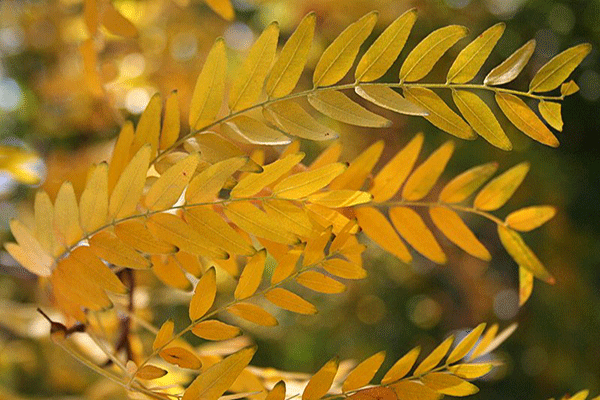Beauty in Every Season
Every season in the Great Plains has its own beauty. In winter we see the sculptural silhouettes of trees. The bark is much more visible and the textures of twigs adds details to the landscape, but there’s a limited range of colors. The spring landscape bursts with fresh green colors of newly emerging plants, vivid colors of tulips and early perennials bursting with soft pinks, yellows and lavender, but there are areas of mulch or bare earth where plants have not filled in yet. Summer is full of deep green colors. Trees and perennials have filled in the bare spots; but late summer heat can scorch the leaves of the trees, blossoms can shrivel in the heat, and the landscape can look withered.
Glorious Fall Color
When temperatures begin to cool, it is fall that offers the final hurrah, the finale of the growing season. As with all great concerts or performances, the finale is a culmination of all the good things that have been enjoyed throughout the performance. It’s like a fireworks show, a grand display of color. The landscape is complete and seedheads on perennials and grasses are radiant, backlit by early morning or late evening light. The evenings are cooler, blossoms stay on the plants longer and don’t wither in the heat of the day. The cool night time temperatures trigger the chlorophyll to exit the leaves of trees, shrubs and perennials… and the display of color begins.
Add Color in the Understory
On the Great Plains, the blaze of color is as likely to come from understory plants as from large maples or oaks. Making sure you have a diverse mix of plants will help it come alive with fall’s brilliant colors: crimson, saffron, plum, burgundy and gold. Having several different heights or layers mimics nature and expands the color range.
While grasses, fruiting shrubs and perennials with bright fall color (bluestar, hosta, perennial Geranium, sedum, prairie smoke) add color to the ground level, below are some trees and shrubs to brighten upper layers of the landscape. Many of the plants listed below are native to Nebraska or well-adapted, with a few that are marginally hardy but worth trying.
Large Shade Trees for Fall Color
(listed very roughly from yellows to reds/purples, with mixed ranges in the middle)
Linden
Kentucky Coffeetree
Honeylocust
Cottonwood
Norway maple
American elm
Ginkgo
Oaks—Black, Pin, Red, Scarlet, White
Maples—Sugar, Red
Small Ornamental Trees
Redbud
Hophornbeam
Sumac (ranges from yellows to reds)
Serviceberry (ranges from yellows to reds)
Maples
Viburnum
Shrubs
Chokecherry
Plum
Hazelnut
Fritschiana Spirea
Dogwood
Chokeberry
Burning Bush
Smoketree
Smooth Sumac
Viburnum
The Nebraska Forest Service strives to enrich lives by protecting, restoring and utilizing Nebraska's tree and forest resources.
